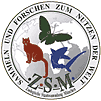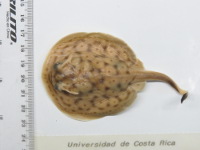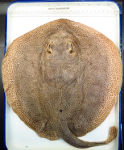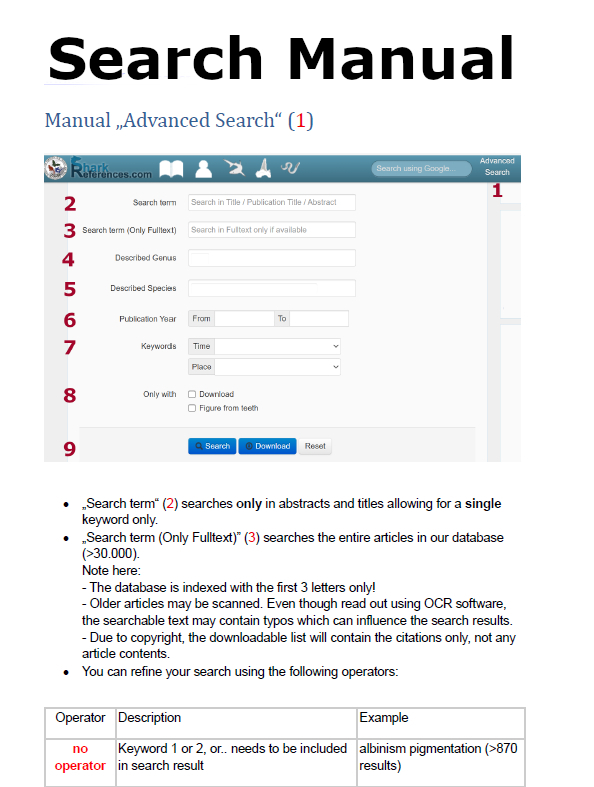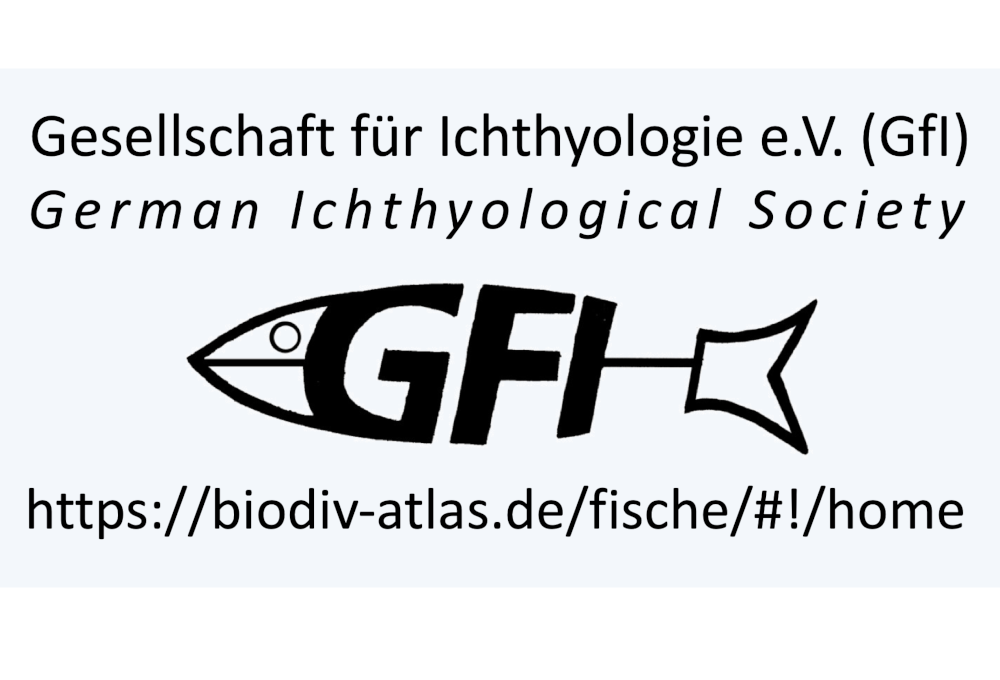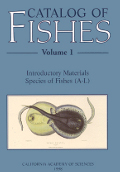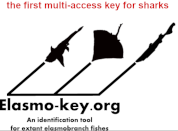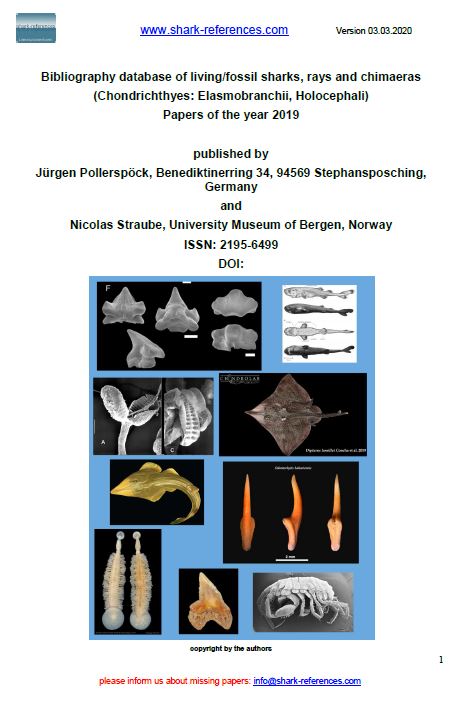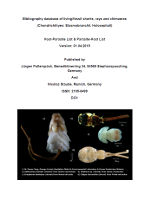Urobatis pardalis
Del Moral-Flores, Angulo, López & Bussing, 2015
Classification: Elasmobranchii Myliobatiformes Urotrygonidae
Reference of the original description
Nueva especie del género Urobatis (Myliobatiformes: Urotrygonidae) del Pacífico oriental tropical. International Journal of Tropical Biology and Conservation, 63(2), 501–514
Nueva especie del género Urobatis (Myliobatiformes: Urotrygonidae) del Pacífico oriental tropical. International Journal of Tropical Biology and Conservation, 63(2), 501–514
Types
Urobatis pardalis
Holotype: UCR: 2289-01; Paratype: UCR: 0357-16; UCR: 0618-05; UCR: 2336-14; UCR: 2503-01;
Urobatis pardalis
Holotype: UCR: 2289-01; Paratype: UCR: 0357-16; UCR: 0618-05; UCR: 2336-14; UCR: 2503-01;
Description :
Citation: Urobatis pardalis Del Moral-Flores, Angulo, López & Bussing, 2015: In: Database of modern sharks, rays and chimaeras, www.shark-references.com, World Wide Web electronic publication, Version 01/2026
Please send your images of "Urobatis pardalis" to info@shark-references.com
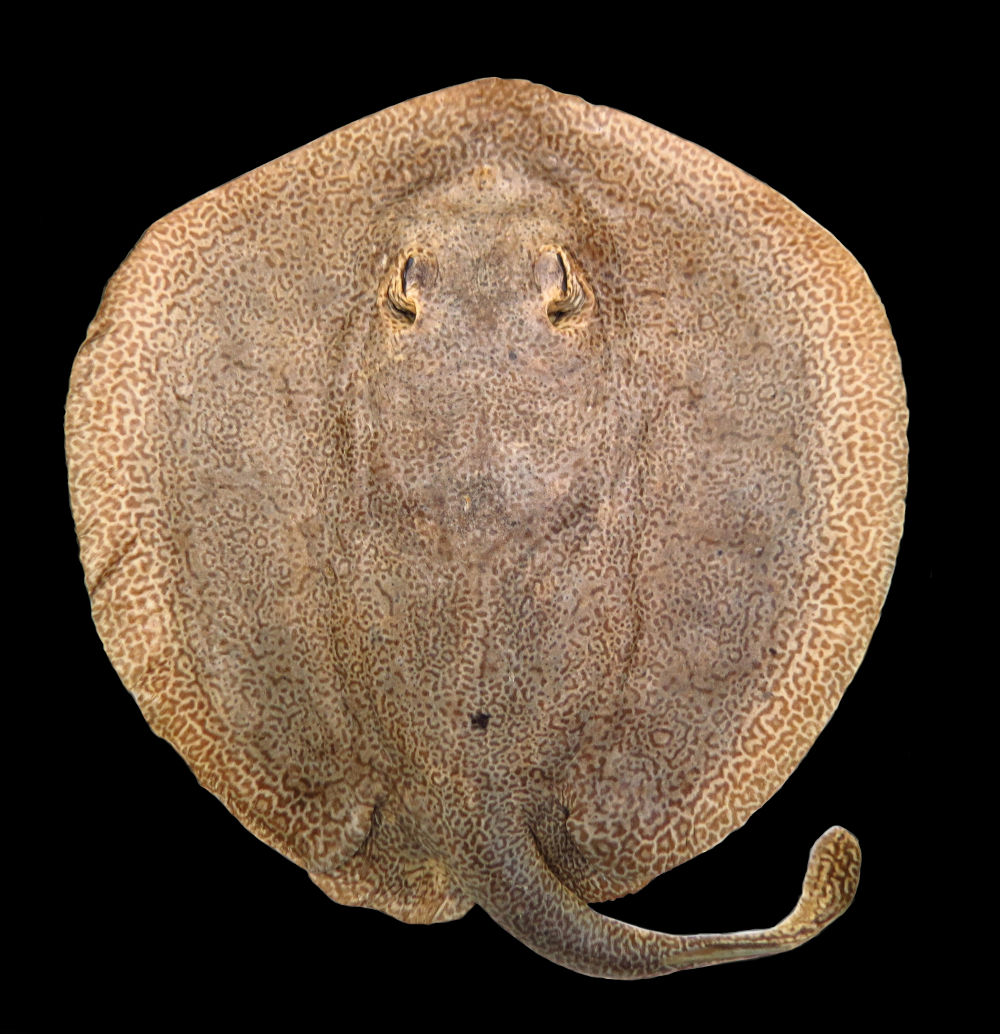
Urobatis pardalis Del Moral-Flores, Angulo, López & Bussing, 2015, Holotype, (UCR 2289-1, mature female, 462mm TL), image by Luis Fernando del Moral-Flores

Urobatis pardalis Del Moral-Flores, Angulo, López & Bussing, 2015, Holotype, (UCR 2289-1, mature female, 462mm TL), image by Luis Fernando del Moral-Flores
Short Description
Orignal diagnosis of DEL MORAL-FLORES, ANGULO, LÓPEZ & BUSSING, 2015 [22427]: The holotype and two paratypes are mature females; two paratypes are males who just reached sexual maturity, with the claspers developed and slightly calcified; 17 paratypes were unborn and because of this condition, they were not considered in the diagnosis and in the description. Disc circular, their wide and their length are about equal; disc width 64.1-65.8% of the total length (TL); disc length 64.1-65.8% of TL; head length 54.3-57.6% of TL; prepelvic length 50.5-52.4% of TL; distance from snout to anus 51.1-53.2% of TL; precaudal length 78.5-86.0% of TL; prespiracular length 14.1- 16.1% of TL; distance between the axils of the pelvics fins and the origin of the caudal fin 22.1-26.0% of TL; width between the axils of the pectorals fins 13.2-15.5% of TL; caudal ventral margin length 14.0-15.9% of TL; caudal dorsal margin length 7.5-8.9% of TL; 27 to 33 rows of teeth in the upper jaw; dorsal denticles or tubercles absent; back of the disc with a brown background with orange shades and white or pale vermiculations of variable thickness, sometimes merging to form spots or ocelli.
Orignal diagnosis of DEL MORAL-FLORES, ANGULO, LÓPEZ & BUSSING, 2015 [22427]: The holotype and two paratypes are mature females; two paratypes are males who just reached sexual maturity, with the claspers developed and slightly calcified; 17 paratypes were unborn and because of this condition, they were not considered in the diagnosis and in the description. Disc circular, their wide and their length are about equal; disc width 64.1-65.8% of the total length (TL); disc length 64.1-65.8% of TL; head length 54.3-57.6% of TL; prepelvic length 50.5-52.4% of TL; distance from snout to anus 51.1-53.2% of TL; precaudal length 78.5-86.0% of TL; prespiracular length 14.1- 16.1% of TL; distance between the axils of the pelvics fins and the origin of the caudal fin 22.1-26.0% of TL; width between the axils of the pectorals fins 13.2-15.5% of TL; caudal ventral margin length 14.0-15.9% of TL; caudal dorsal margin length 7.5-8.9% of TL; 27 to 33 rows of teeth in the upper jaw; dorsal denticles or tubercles absent; back of the disc with a brown background with orange shades and white or pale vermiculations of variable thickness, sometimes merging to form spots or ocelli.
Distribution
eastern tropical Pacific, between the coasts of Colombia and Costa Rica [22427]; Source: www.gbif.org
eastern tropical Pacific, between the coasts of Colombia and Costa Rica [22427]; Source: www.gbif.org
Remarks
shark-references Species-ID=14324;
shark-references Species-ID=14324;
